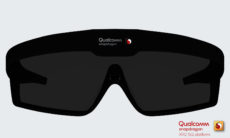Hyundai and Flam Introduce Haptic Mixed Reality Campaign
Hyundai Motor India Limited has partnered with Flam to launch a haptic-enabled mixed reality experience for the introduction of the new Hyundai VENUE. The collaboration signals a shift in automotive marketing by presenting consumers with a multi-sensory encounter designed to reflect the vehicle’s technological direction. Both companies aim to push the boundaries of digital engagement by merging touch, movement, and visual immersion into a single interactive format.
The initiative is described as the first full-scale automotive campaign to integrate haptic mixed reality. By delivering the experience through leading media outlets, the project seeks to position the new Hyundai VENUE within a broader conversation around next-generation mobility. Flam’s technology offers a tactile dimension intended to strengthen emotional resonance and create a distinctive form of product storytelling.
For Hyundai Motor India Limited, the campaign represents an extension of the brand’s commitment to innovation. The company views the mixed reality deployment as a way to give potential customers an early sense of its design philosophy and engineering aspirations. Flam’s leadership framed the partnership as an opportunity to demonstrate how immersive technology can enhance narrative impact and broaden brand connection.
The experience activates when users scan Hyundai Motor India Limited’s print advertisements in prominent publications. Once scanned, the ads unlock a three-dimensional mixed reality model of the new Hyundai VENUE that can be explored through a mobile device. The visual layer is combined with haptic feedback, allowing viewers to feel simulated engine responses, musical vibrations, and ambient environmental cues as they navigate through the digital vehicle environment.
This haptic-driven approach aims to create a sensory bridge between the physical and virtual worlds. The vibrations synchronise with the unfolding visual elements, enabling users to sense different aspects of the vehicle’s behaviour. Flam positions this as an evolution of digital storytelling, transforming mobile screens into tools capable of delivering both information and physical sensation.
The campaign is also structured with mobile-first accessibility in mind. Because the experience launches directly from print media through a smartphone, it removes the need for additional hardware or app downloads. The rapid activation is intended to facilitate spontaneous engagement while still supporting deeper interaction once users begin exploring the features. Flam highlights this as a full-funnel strategy, designed to encourage discovery, emotional involvement, and broader reach through easy sharing.
Hyundai Motor India Limited emphasises that the project aligns with its belief that innovation should evoke a sense of connection rather than function solely as a display of technology. The haptic element is positioned as central to this idea, with each vibration intended to mirror specific actions within the virtual environment. The company presents the experience as a new method of narrating the character of the vehicle, allowing audiences to sense motion, rhythm, and transitions in ways that text or visual media alone cannot replicate.
Early results indicate strong consumer engagement. The campaign has generated more than 553,000 scans and has recorded an engagement rate of roughly 7.8%. These figures surpass several global performance benchmarks and position the project among Flam’s most successful interactive campaigns to date. Both partners interpret the response as evidence that multi-sensory content can drive more meaningful audience involvement and help brands stand out in a competitive market.
The campaign demonstrates a shift toward a future where consumers engage with brands through layered experiences rather than passive viewing. Flam’s technology aims to convert conventional touchscreens into sensory interfaces capable of delivering emotional impact alongside information. As a result, the project is being viewed as an early example of how haptic mixed reality may influence digital advertising strategies in the automotive sector and beyond.










